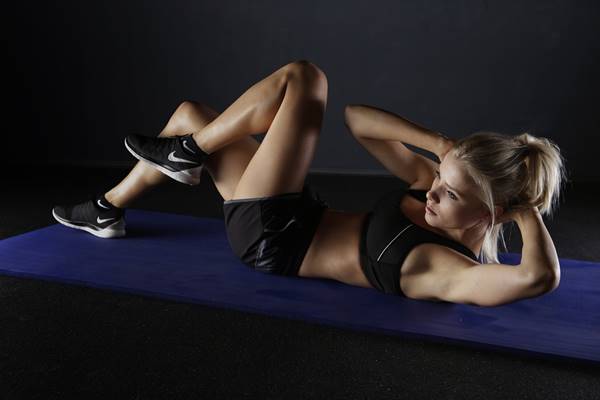The importance of exercise in preventing varicose veins cannot be overstated. Regular physical activity plays a crucial role in maintaining healthy blood circulation and reducing the risk of developing this common condition. Engaging in exercises that target the leg muscles, such as walking, jogging, or cycling, can help pump blood back towards the heart and prevent it from pooling in the veins.

These activities also strengthen the walls of the veins, improving their elasticity and reducing their propensity to become varicose. Moreover, exercise aids in weight management, which is another important factor in varicose vein prevention. Maintaining a healthy weight reduces the pressure on your legs and lowers your chances of developing swollen or damaged veins. Additionally, exercising regularly helps to improve overall cardiovascular health, which is vital for maintaining proper blood flow throughout the body.
Low-Impact Exercises for Improving Blood Circulation
Low-impact exercises can play a significant role in improving blood circulation, thus aiding in the prevention of varicose veins. Engaging in regular physical activity helps to strengthen the calf muscles, which act as natural pumps, assisting blood flow back to the heart.
Walking is an excellent low-impact exercise that engages these muscles and promotes healthy circulation throughout the body.
Additionally, swimming is highly beneficial as it provides resistance against the water, enhancing muscle strength and encouraging blood flow.
Another gentle exercise option is cycling, which can be done indoors on a stationary bike or outdoors on a low-traffic route.
Yoga and tai chi are also recommended as they incorporate stretching and deep breathing techniques that stimulate blood circulation while minimizing strain on the body. Read more about meditation and using deep breathing techniques at RetreatforMeditation.com
Incorporating these low-impact exercises into your routine can contribute to improved blood flow, reducing the risk of developing varicose veins over time.
Strengthening Exercises to Support Healthy Veins
Strengthening exercises play a crucial role in supporting healthy veins and preventing the development or progression of varicose veins. These exercises primarily focus on improving blood circulation and promoting overall leg muscle strength.
One effective exercise is calf raises, where you rise up onto your toes and then lower your heels back down, working to engage the calf muscles.
Another beneficial activity is leg lifts, which involve lying on your back and lifting one leg at a time, targeting the thigh muscles.
Additionally, walking or jogging can help enhance blood flow throughout the legs while also strengthening leg muscles. Engaging in low-impact activities such as swimming or cycling can also be beneficial for individuals with varicose veins. By incorporating these strengthening exercises into your routine, you can actively support healthy veins and minimize the risk of varicose veins forming or worsening over time.
Flexibility Exercises to Improve Venous Return
Flexibility exercises play a crucial role in improving venous return and preventing varicose veins. These exercises focus on enhancing the flexibility of the muscles surrounding the veins, promoting better blood flow and reducing the risk of developing venous insufficiency.
One effective exercise is yoga, which involves various poses that stretch and strengthen the legs, calves, and ankles. Poses like downward dog, standing forward bend, and legs-up-the-wall pose help relieve pressure on the veins while increasing blood circulation.
Another beneficial exercise is Pilates, as it targets core strength and leg muscles. Movements such as leg circles, scissors, and heel beats engage multiple muscle groups, stimulating blood flow towards the heart.
Furthermore, incorporating regular stretching routines can also improve flexibility. Simple calf stretches or ankle rotations can alleviate tension in these areas while promoting healthy blood circulation.
Cardiovascular Exercises for Promoting Overall Vascular Health
Cardiovascular exercises play a crucial role in promoting overall vascular health, including the prevention and management of varicose veins. These exercises help to improve blood circulation throughout the body, strengthening the heart and blood vessels. Engaging in regular cardiovascular activities can aid in reducing venous congestion, which is a common cause of varicose veins.
Aerobic exercises such as walking, jogging, swimming, or cycling are excellent options for promoting vascular health. These activities increase heart rate and help pump oxygen-rich blood to the lower extremities. The rhythmic contraction and relaxation of leg muscles during these exercises assist in pushing blood back up towards the heart, reducing pooling and pressure on the veins.
Additionally, high-intensity interval training (HIIT) workouts can be beneficial for vascular health. HIIT involves alternating between short bursts of intense exercise and periods of rest or low-intensity activity. This type of exercise stimulates blood flow while enhancing overall cardiovascular fitness.
Tips For Incorporating Exercise Into Your Daily Routine For Varicose Vein Prevention
Incorporating regular exercise into your daily routine can be a highly effective way to prevent varicose veins. Here are some tips to help you make exercise a consistent part of your daily life:
1. Start with low-impact activities: Begin with exercises that are gentle on your legs and gradually increase the intensity over time. Walking, swimming, and cycling are excellent options.
2. Set achievable goals: Establish realistic exercise goals that fit into your schedule and abilities. Start with shorter sessions and gradually work towards longer durations.
3. Stay consistent: Aim for at least 30 minutes of exercise most days of the week. Consistency is key to reaping the benefits of physical activity for varicose vein prevention.
4. Mix it up: Incorporate a variety of exercises into your routine to engage different muscle groups and improve circulation throughout your body.